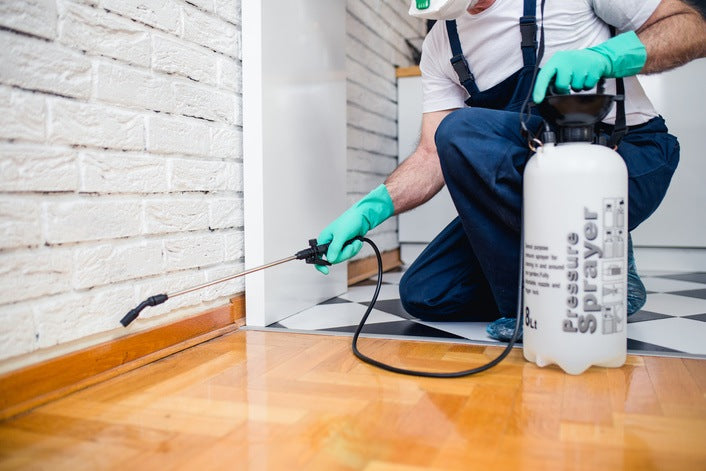Trusted Solutions for Pest Problems from Pest Control Lockhart
Trusted Solutions for Pest Problems from Pest Control Lockhart
Blog Article
Exploring Invasion and Therapy Strategies worldwide of Bug Control
The landscape of insect control includes a myriad of obstacles, particularly as infestations of common family insects continue to evolve. By integrating preventative actions with advanced administration strategies, such as Integrated Bug Management (IPM), homeowners can better secure their atmospheres.

Typical Family Pests
When it pertains to managing our space, understanding typical family bugs is crucial. These bugs not only disrupt our comfort but can additionally present health risks and damages building. The most prevalent household pests include ants, cockroaches, rats, termites, and bed insects.
Ants, often seen foraging in kitchens, can contaminate food and develop large colonies. Roaches, recognized for their durability, can cause allergies and spread virus. Rats, consisting of computer mice and rats, can trigger structural damage and lug conditions like hantavirus and salmonella. Termites, usually described as "quiet destroyers," can endanger the integrity of wooden frameworks, causing expensive fixings. Bed insects, although not illness carriers, can trigger significant discomfort with their attacks and cause emotional distress.
Identifying the signs of these bugs, such as droppings, nests, or bite marks, is crucial for early treatment (Pest Control Lockhart). Correct hygiene practices, securing entrance points, and keeping a clutter-free atmosphere work preventative procedures. By recognizing these usual home insects and comprehending their habits, house owners can take proactive steps to mitigate infestations, guaranteeing a healthier living atmosphere
Comprehending Bug Infestations
Parasite invasions can intensify quickly, turning a small annoyance into a substantial problem if not addressed without delay. Typical aspects contributing to infestations consist of poor cleanliness, structural susceptabilities, and seasonal changes that drive insects indoors.
Identifying the kind of bug is essential, as various species display diverse behaviors and reproductive prices. For instance, rodents may establish nests in hidden locations while bugs like roaches flourish in moist atmospheres. Early detection frequently rests on recognizing indicators such as droppings, nibble marks, or unusual audios, which can show a trouble prior to it comes to be severe.
Cozy, moist climates can facilitate the quick growth of pest populaces, while adjustments in landscaping or construction can unintentionally create favorable atmospheres. An educated technique to comprehending these dynamics lays the foundation for effective insect administration approaches in the future.
Therapy Approaches and Techniques
Reliable therapy methods and methods are crucial for minimizing pest problems and bring back a safe setting. A multifaceted technique is frequently best, incorporating chemical, organic, and mechanical techniques customized to the certain parasite and the seriousness of the invasion.
Chemical treatments include making use of insecticides and herbicides, which can efficiently get rid of insects. Correct application and adherence to safety standards are essential to minimize risks to people and non-target microorganisms. Integrated Parasite Administration (IPM) urges the sensible use chemicals as a last resource, relying instead on tracking and limit degrees to figure out intervention needs.
Biological control techniques involve presenting all-natural killers or parasites to minimize bug populaces. This approach is increasingly prominent, particularly in farming setups, as it promotes ecological sustainability.
Mechanical methods, such as catches and obstacles, provide instant alleviation from bugs without introducing chemicals. Options include sticky traps for pests or physical barriers for rats.
Inevitably, the choice of therapy technique ought to think about the specific insect, the setting, and potential influence on human health and wellness and ecological communities. A well balanced combination of these strategies can successfully take care of problems while promoting lasting parasite control services.
Safety Nets for Residence
Proactively addressing parasite issues before they rise is essential for keeping a healthy home atmosphere (Pest Control Lockhart). Implementing effective precautionary steps can significantly minimize the probability of problems, inevitably protecting both your residential or commercial property and well-being

Appropriate landscaping likewise plays an essential duty in prevention. Maintaining shrubs and trees trimmed away from your home reduces the chances of insects finding their method Visit Website inside your home. Moreover, make sure that drain systems are functioning effectively to stop standing water, which can attract insects and other pests.
Lastly, routine evaluations are advisable. Consistently inspecting for indicators of pest activity permits early treatment. By embracing these safety nets, house owners can create a setting that is much less friendly to parasites, therefore enhancing their overall lifestyle and minimizing the need for comprehensive pest control treatments.
Industrial Pest Control Strategies
A detailed strategy to commercial parasite control is essential for organizations aiming to preserve a risk-free and hygienic atmosphere. Effective techniques entail a combination of routine evaluations, worker training, and the application of Integrated Insect Monitoring (IPM) methods.
Routine examinations enable very early detection of insect task, permitting prompt intervention. Companies should establish a regular timetable for these evaluations, focusing on risky areas such as cooking areas, storeroom, and waste disposal websites. Staff member training is similarly vital; personnel should be educated on the indicators of parasite invasions and the importance of reporting them instantly.
Implementing IPM methods assists minimize insect issues sustainably. This includes habitat alteration, such as sealing access points and decreasing clutter, along with employing all-natural deterrents prior to considering chemical treatments.

Moreover, working together with a qualified bug control provider guarantees accessibility to specialist knowledge and innovative treatment choices. This collaboration can bring about personalized insect control plans customized to the particular demands of the business, reducing dangers and boosting total effectiveness. Ultimately, a proactive and news educated method fosters a pest-free atmosphere, safeguarding both public wellness and service reputation.
Conclusion
In verdict, effective bug control requires an extensive understanding of usual house parasites and their habits, combined with targeted therapy approaches. Applying safety nets along with treatment approaches such as Integrated Pest Monitoring and biological control enhances the capability to mitigate problems. Regular inspections and a combination of chemical and mechanical remedies even more add to preserving pest-free settings. Ultimately, an all-round technique to pest visit this website management is crucial for securing living spaces from undesirable burglars.
Report this page